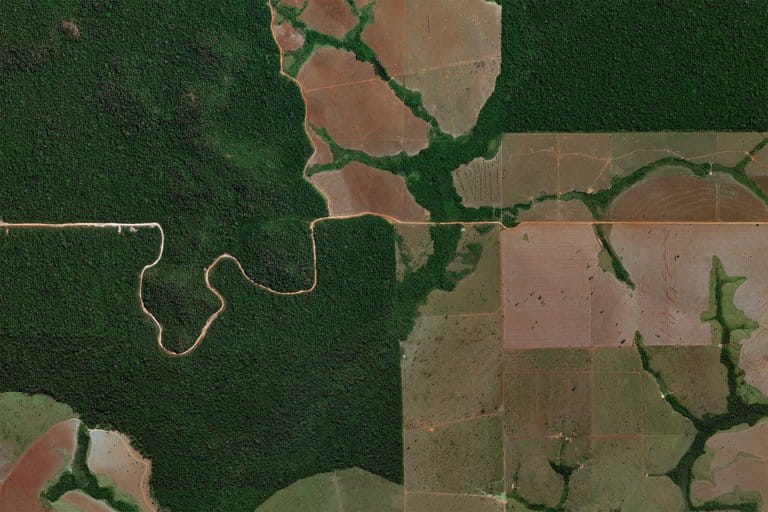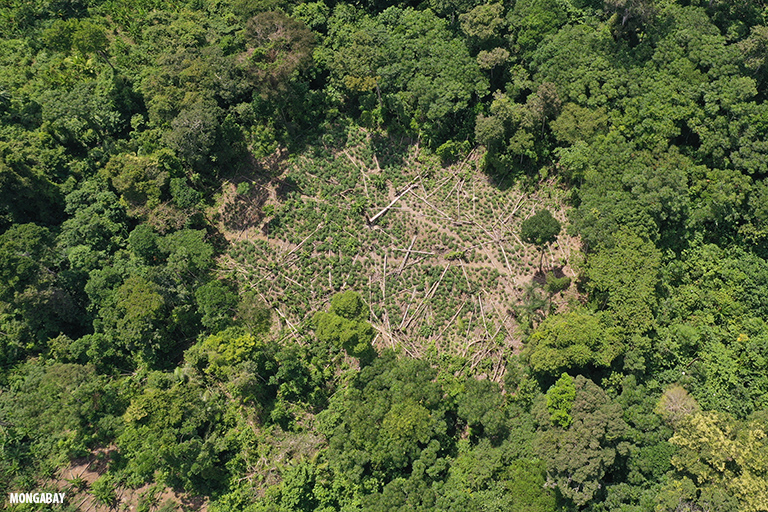- A group of researchers from the Science Panel for the Amazon, an initiative dedicated to the region, says reversing the destruction of the rainforest needs to be done through large-scale restoration.
- They prescribe tailored action that unlocks different benefits in areas with high deforestation rates and forest degradation, and those experiencing climate change impacts.
- So-called arcs of reforestation would need to be created across Bolivia, Colombia, Peru and Brazil, while conservation work would seek to stop further deforestation.
- According to the experts, with the exception of Brazil, Amazonian countries lack forest data for effectively running restoration actions.
A transnational, large-scale restoration strategy for the Amazon basin would allow the countries that share it to create an alternative future for the world’s largest tropical forest, by making it resilient to climate change and reaping social and economic benefits for the people in the region, according to a recent report by the Science Panel for the Amazon (SPA).
The policy brief, presented at the COP27 climate summit in November 2022, focuses on seven targets: achieving zero deforestation by 2030; avoiding forest degradation; restoring forests in protected areas and in undesignated lands; restoring areas cleared on private lands beyond lawful limits; restoring forest cover beyond legal provisions; and restoring degraded farmland. But according to the same report, restoration alone cannot compensate for the high rate of deforestation and degradation threatening the Amazon Rainforest, and needs to go in tandem with conservation work.
To achieve these goals, the brief highlights several key actions or levers, which include better policymaking and enforcement, addressing land rights issues, increasing accountability of the private sector, empowering local communities, and improving forest monitoring.
“These levers unlock a broad range of benefits that go far beyond restoration. There are crucial benefits to applying them, all together,” Jos Barlow, a professor of conservation science at Lancaster University in the U.K. and co-author of the policy brief, told Mongabay. “For example, better public policies and monitoring both facilitate governance, while resolving land tenure enables all other levers to function more effectively.”
The large-scale action the experts propose involves creating “arcs of reforestation,” in contrast to the arc of deforestation cutting into the eastern and southern Brazilian Amazon. In this region, land grabbing, illegal logging and mining, and agriculture have caused some of the highest rates of forest loss in decades.

Although the report focuses on Colombia, Brazil, Peru and Bolivia as the core target regions, the exact areas to be restored are yet to be defined. “This demands careful analysis and processing time,” Nathália Nascimento, a co-author of the study and researcher at the Institute of Advanced Studies at the University of São Paulo, told Mongabay.
Marielos Peña Claros, a professor of tropical ecology at Wageningen University in the Netherlands, said the selection is based on studies indicating high deforestation rates and climate change impacts. “Those areas are becoming drier, which means dry seasons are getting longer or more severe, and it is expected they are more prone [to] a tipping point.”
A better future means no deforestation or further degradation
According to Barlow, achieving zero deforestation across the Amazon requires targeting almost all forms of legal deforestation as well as illegal, because continuing to clear the rainforest could undermine the benefits of restoration actions.
Keeping the Amazon’s old-growth forests, potent carbon sinks, standing would also support climate change mitigation, according to a 2021 study. The study, which looked at forest loss and recovery across all nine Amazonian countries from 1985-2018, observed that secondary forests, although they had claimed back almost a third of the deforested Amazon Basin, managed to offset only 9.8% of the emissions caused by clearing the original, old-growth forests.
“Secondary forests absorb carbon faster than old-growth forests, but they simply haven’t had enough time to recuperate the volume of carbon that is lost from clearing old-growth forest,” Charlotte Smith, a co-author of the 2021 study and tropical forest researcher at Lancaster University, told Mongabay. “Even after decades of uninterrupted regeneration, a secondary forest will only hold a fraction of the carbon that was stored in the old-growth that preceded it.” But despite their lower capacity to store carbon, Smith said forest regrowth “is the safest and most cost-effective method of removing carbon from the atmosphere currently available.”

Ane Alencar, the director of science at the Amazon Environmental Research Institute (IPAM), said the biggest restoration action needed in the Amazon is protecting already degraded areas from further disturbances, such as recurrent fires. “The degradation caused by the death and decomposition of trees affected by fire emits gases for years, and not just while the fire is burning. Those areas become an important source of emissions, contributing to raising the average temperature on the planet. And in a scenario of global warming, they are more susceptible to new fires.” Alencar said a big part of those disturbances reflects land problems and conflicts in the region, and that reducing land speculation is key for protecting forests at risk of degradation.
Building stronger policies for the basin
Effective public policies for the Amazon need data; there’s abundant information on the Brazilian Amazon, but not much from the eight other countries that share the rainforest.
“There are many gaps out there, in many research areas and research topics,” Peña Claros said. “We saw this clearly when writing the assessment report, during which we actively searched for data generated elsewhere than Brazil. It is extremely important to produce more information in the countries outside Brazil. The Amazon is a diverse system not only in terms of biodiversity, but culture, socioeconomic, policy, etc. The knowledge gained in Brazil does not often apply to other conditions, and we need to be aware of these differences.”
Given the region’s differences, Barlow said fighting deforestation and large-scale forest restoration should be synchronized across all Amazonian countries. “Any country-level action will be advantageous, even if carried out alone, and there are of course many challenges in implementing transnational governance. But concerted action across the basin has many more advantages, especially in frontier regions where activities that degrade the environment spill over across the borders, and in aquatic systems, where connectivity is key,” Barlow said. “A joint approach is essential to avoid leakages, when tightening of environmental regulations in one region merely pushes the problem somewhere else.”
Citation:
Smith, C. C., Healey, J. R., Berenguer, E., Young, P. J., Taylor, B., Elias, F., … Barlow, J. (2021). Old-growth forest loss and secondary forest recovery across Amazonian countries. Environmental Research Letters, 16(8), 085009. doi:10.1088/1748-9326/ac1701
Banner image: Peruvian Amazon. Image by Rhett A. Butler.
Relevant reading:
From deforestation to restoration: Policy plots path to Amazon recovery
President Lula’s first pro-environment acts protect Indigenous people and the Amazon
